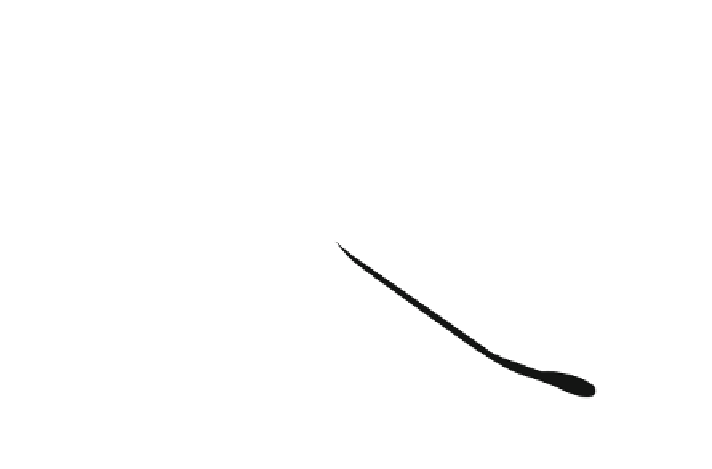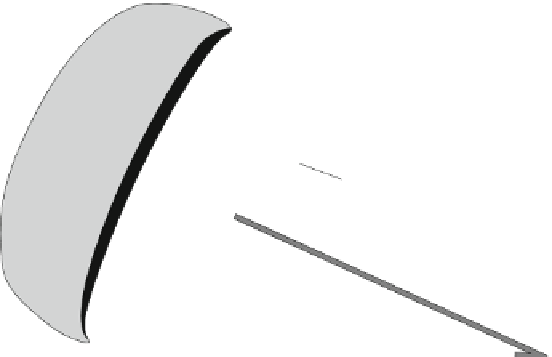Environmental Engineering Reference
In-Depth Information
tow kite
steering
system
launching and landing
system
steering gondola
pull rope
winder
power
Fig. 17.15
Use of wind energy with Sky Sail technology
with a flashpoint of over 60C (140F) may be used on ships. That is the reason
why kerosene is also prohibited. So far exceptions to this rule are ships in inland
navigation, e.g., ferries and seagoing LNG tankers which are allowed to use the
burn-off gas in their internal combustion engines [
58
].
17.3.2.2 Sky Sails
Tow kites generate 2-3 times the energy per square meter compared to normal
sails depending on their shape which is comparable to that of a paraglide [
59
]. The
kite system consists of a simple main stunt kite for propulsion, made of a strong
and weather-resistant textile and is able to fly at altitudes between 100 and 300 m
(328 and 984 ft), where steady winds are predominant; see Fig.
17.15
.
Tow kites decrease the operating costs of a ship between 10 and 34%,
depending on the wind. With optimal winds, fuel consumption can be temporarily
reduced by up to 50%.
In the future, nearly all bulk carriers, cruise ships, and trawlers may use tow
kites which can be retrofitted. This means that approximately 10,000 ships could
be retrofitted worldwide with a tow kite system.
17.3.2.3 Photovoltaic Cells on Ships
Currently a new experimental ship with a four man crew, such as a catamaran with
a particularly low hydraulic resistance coefficient and light weight is already able

































Search WWH ::

Custom Search